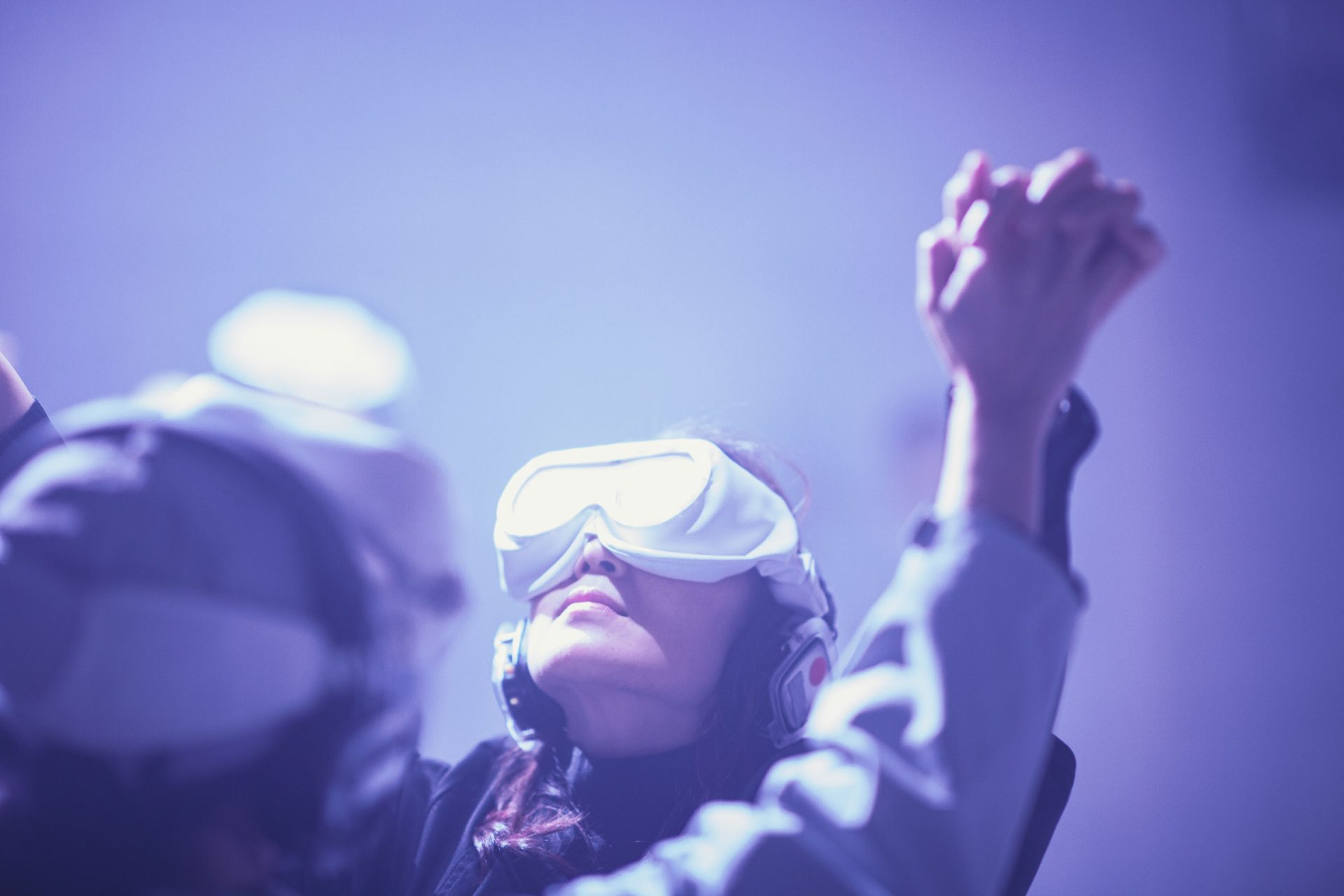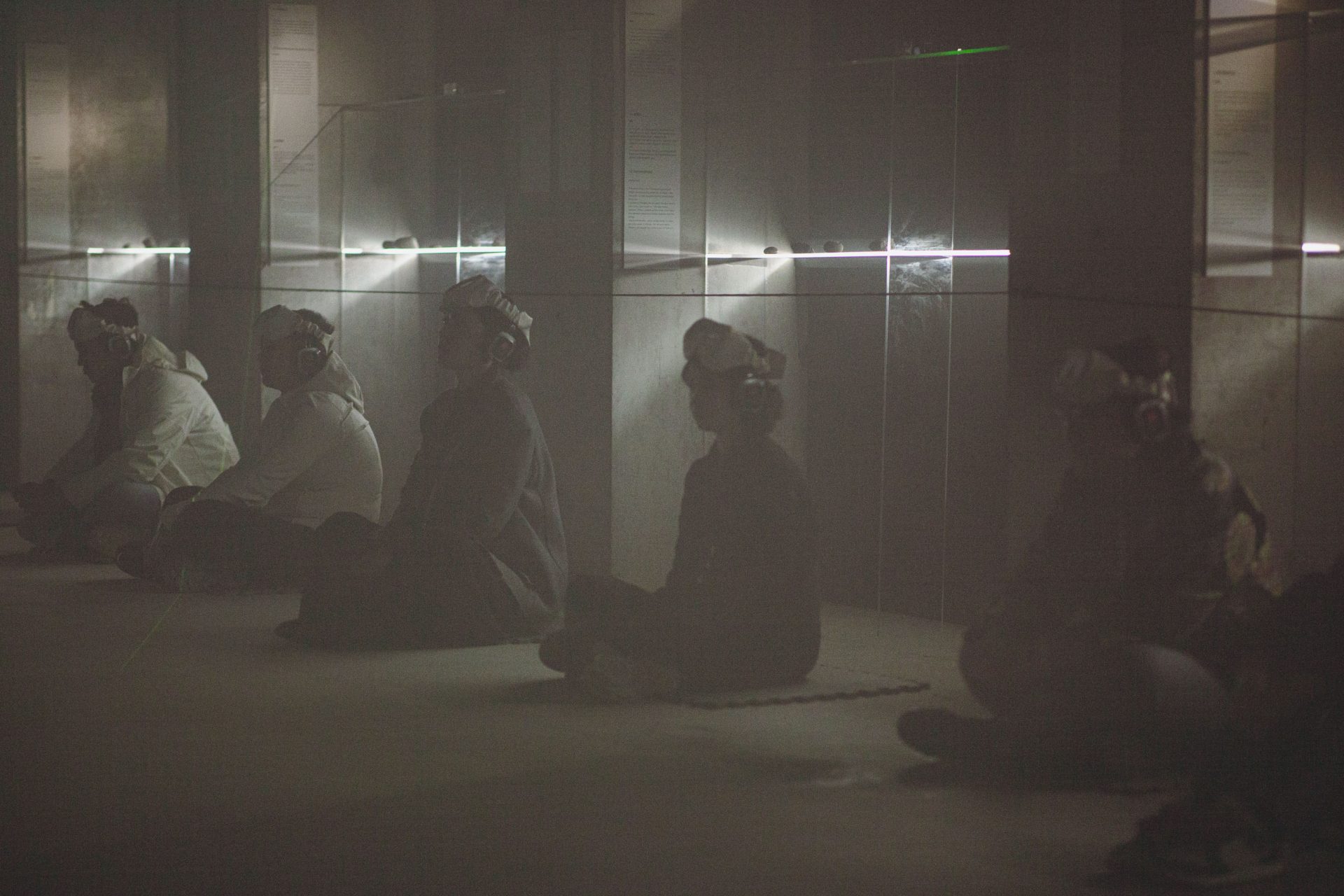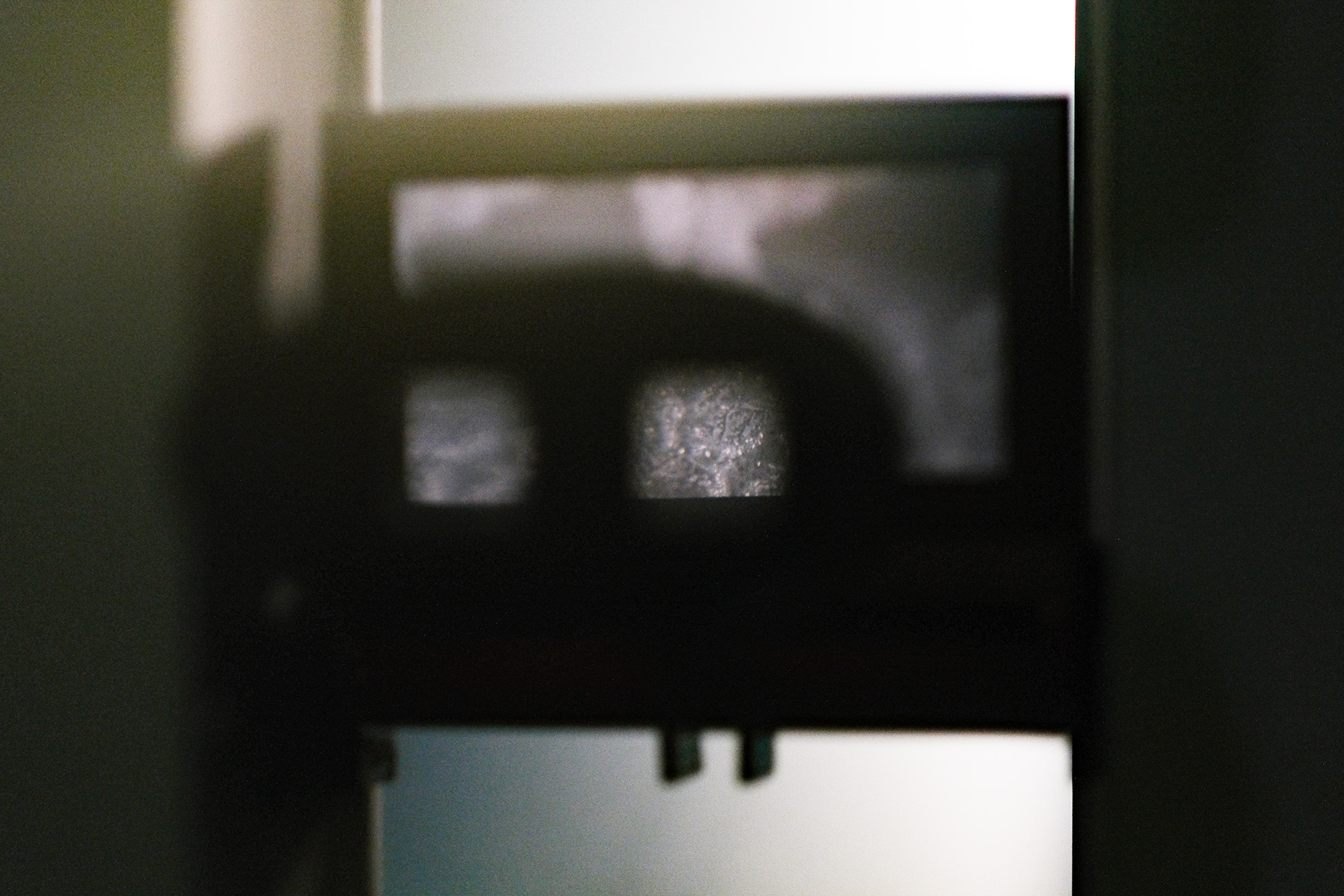CAC x WBM | Lundahl & Seitl: River Biographies
Artists: Lundahl & Seitl
Produced by: Chronus Art Center & West Bund Museum
Supported by: CHANEL
Living Archive Session Opening Hours: Tuesday – Sunday: 11:00 –18:00
Embodiment Session Performances (~45mins):
Tuesdays – Sunday: 14:00, 16:00
(Booking required, capacity: 20 /session)
Location: West Bund Museum, 1F Art Window (North Plaza Entrance)
Swedish artist duo Lundahl & Seitl present River Biographies – Huangpu River. Co-produced by the Chronus Art Center (CAC) and the West Bund Museum, this program is a special commission for the “Cultural Researcher” program. The program was initiated by the West Bund Museum with the special support of CHANEL.
From April 28 to May 11, 2025, Lundahl & Seitl undertook a field research project in Shanghai, supported by CAC and the West Bund Museum.The project focuses on Shanghai’s soundscape and the city’s local cultural fabric, taking the Huangpu River — Shanghai’s “mother river” — as its point of departure. By exploring sound as a way of listening to the river, the artists seek to rediscover its multifaceted presence.
For over two decades, Lundahl & Seitl’s research-based practice has revolved around the human body as a medium, exploring its entanglement with landscapes, ecosystems, and technologies of perception. River Biographies is a perennial, evolving art project shaped by rivers and people who live alongside them. It listens, adapts and learns. Each iteration responds to the ecological, emotional, and cultural landscapes of a particular river and its surrounding communities. Huangpu, Indus, Ruhr, Bosphorus.The rivers’ own memory carries personal, geological, chemical, and industrial histories. Buried rivers, lost species, disturbed climates. The rivers in the artwork are part of the earth’s body, silenced by what we can no longer bear: grief, shame, loss, longing, sacredness.
With River Biographies – Huangpu River at Westbund, participants are invited to enter dialogue with water—as memory, as witness, as force—and parts of themselves shaped by its flow. This is a relational space where things of the world remain unseen until met within the body.
The project unfolds as a poetic topology of bodies, movement, emotions, stones, tears, water and voices, a process where Shanghai meet riverine communities across the world: the Indus — revered yet polluted; the Ruhr — once straightened, now slowly rewilding; the dammed rivers of northern Sweden, where trapped water generates energy displaced elsewhere. Each current carries both harm and renewal, reminding us that what is buried or silenced may also be restored.
Together, these global cycles of water form a score, a choreography of movement and relation; asking how grief can be transformed into care, and how waters, once controlled or abandoned, might be returned to flow.
River Biographies takes two interwoven forms:
1. Living Archive
— a continuous environment of mist, smell, sound, stones and vibration, continuously shifting with the tides, echoing within the memory of the rivers of the world. Songs drift in and out, carried on sub-bass vibrations and
hyper-directional loudspeakers. Here, sound does not diffuse into the room but travels like a tight beam, landing directly on the listener’s body — as if the voice originates from with and within them. The tides bring a shift in the mists: smell particles — the river’s memory made molecular — evoke geological, chemical, and industrial histories. Songs drift in and out, sculpted into air as fragile tides.
2. Embodiment Sessions
Groups of twenty participants surrender their autonomy to the collective expression of rivers. To embody the river is not something one observes – it is something one undergoes. In each session, they are divided into two roles: stones and water. The stones remain still while the water moves among them, simulating the current’s approach, pressure, and convergence. Participants receive wireless headphones and goggles that obscure sight and turn the gaze inward. Smell and touch are the work’s first language – a language that bypasses vision and logic, touches memory, and opens the body to another kind of knowing. Within this sensory environment,participants are guided by voices set into motion through hand-to-hand intra-action.
How to Experience the Embodiment Session of River Biographies (Free entry)
Reservations must be made via the “LIFE WESTBUND” mini program on WeChat. During live performances, non-participating visitors are welcome to enter the gallery but remain outside the performance area. The embodiment session is limited to 20 participants per session and lasts around 45 minutes. Before each session, participants receive a short introduction and are provided with headphones. Scan the QR code below, using WeChat, to register (free entry):

Lundahl & Seitl constantly challenge the exhibition medium through choreography, mass, and time. They exhibit all over the world, including at the Royal Academy of Art (UK), Martin-Gropius-Bau (DE), Momentum 8 (NO), Centre Pompidou Metz (FR), 3rd Kochi Muziris Biennale (IN) and the commissioned work Echoes of Alternative Histories at Staatstheater Kassel during documenta 15.
Located in the Shanghai Corniche in Xuhui District, West Bund Museum is one of the core public cultural institutions that make up the famed West Bund Cultural Corridor along the Huangpu River Waterfront. Designed by renowned British architect Sir David Chipperfield, West Bund Museum first broke ground in 2017 and has been officially open to the public since 2019. In the inaugural year, the Museum joined hands with the Centre Pompidou for an unprecedented cultural partnership.
The “Cultural Researcher” program centers on the thread of Shanghai’s local cultural context, viewing it as a vital slice within the global landscape. The evolution of local culture reflects multiple dimensions—from the humanities and social sciences to broader cultural movements—revealing how local narratives resonate within global currents. Through in-depth research into local culture, the project seeks to document, preserve, and reinterpret regional heritage, contributing to new forms of knowledge production that respond to the dynamics of cultural globalization. The program is specially supported by CHANEL.
Chanel Limited is a private company and parent of the Chanel group, a world leader in creating, developing, manufacturing and distributing luxury products. Founded by Gabrielle Chanel at the beginning of the last century, Chanel offers a broad range of high-end creations, including Ready-to-Wear, Leather Goods, Fashion Accessories, Eyewear, Fragrances, Makeup, Skincare, Jewellery and Watches. Chanel is also renowned for its Haute Couture collections, presented twice yearly in Paris, and for having acquired a large number of specialised suppliers, collectively known as the Métiers d’art. Chanel is dedicated to ultimate luxury and to the highest level of craftsmanship. It is a brand whose core values remain historically grounded on exceptional creation. As such, Chanel promotes culture, art, creativity and “savoir-faire” throughout the world, and invests significantly in people, R&D, sustainable development and innovation. At the end of 2024, Chanel employed over 38,400 people worldwide.
The CHANEL Culture Fund fosters a vibrant network of creators and innovators to advance the ideas that shape culture worldwide. Core programmes include CHANEL’s Art Partners, institutions whose leaders are supported in the development of ground-breaking, long-term initiatives that bring innovation to the cultural landscape. The CHANEL Next Prize celebrates artists and accelerates their future successes through access to resources and mentorship. And the podcast CHANEL Connects amplifies the voices of thought-leaders across disciplines, generations, and geographies—tackling the defining issues of our time.








